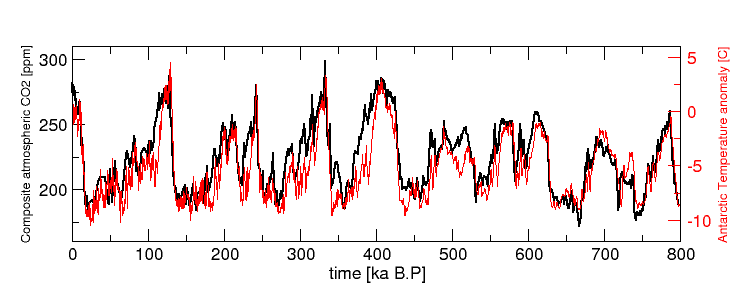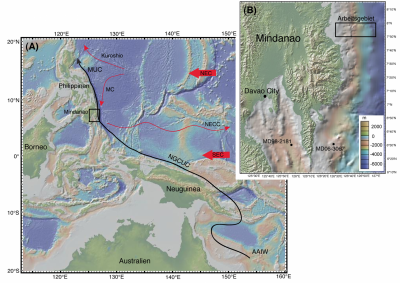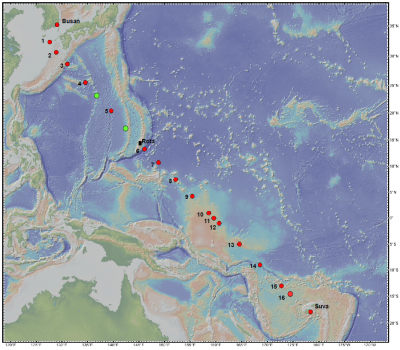- Low-Latitude Climate Variability
- Projects
- Ice age carbon dioxide
Ice age carbon dioxide

One of the most striking and at the same time most enigmatic aspects of late Quaternary ice age terminations is their temporal association with increasing concentrations of atmospheric CO2, with the strikingly consistent pattern in the evolution of atmospheric CO2 levels suggesting a regulatory mechanism.
We study this phenomenon in shells of planktic and benthic foraminifera in high-resolution marine deposits of the Indo-Pacific region in collaboration with colleagues from Chile, Japan, South Korea and the USA.
EISPAC (BMBF)
Ice Age storage of atmospheric CO2 in the ocean (2013-2015)
Compared to interglacial periods, the atmospheric CO2 content was significantly reduced during glacial periods, which has been related to a temporal sequestration of CO2 in the deep ocean. To date, no clear evidence exists for a postulated glacial abyssal reservoir of the atmospheric CO2 in the Pacific and its deglacial release through the Southern Ocean.
In this project, we aim to verify the hypothesis of the glacial sequestration of atmospheric CO2 in the deep Pacific. It is planned to sample sediments and the water column on the continental margin of the island of Mindanao (Philippines). The samples/data will allow us to test whether and how atmospheric CO2 was sequestered into abyssal Pacific during glacials for thousands of years and then ventilated rapidly through intermediate waters that circulated through the Southern Ocean during the glacial terminations.
TRAGeBiO (BMBF)
Contribution of submarine CO2-sources to the glacial-interglacial fluctuations in CO2 content (2012)
The significantly reduced concentration of CO2 in the atmosphere during the Ice Age compared to interglacial periods is attributed to intermediate storage of the CO2 in the deep ocean. So far, however, there is no clear evidence for a postulated Pacific deep-water reservoir for the storage of this atmospheric CO2 during glacial periods and its release back into the atmosphere via the Southern Ocean during the late glacial meltdown periods.
In this project, cores are taken from critical water masses in the Pacific Ocean to investigate whether there existed such deep-sea carbon sources that were responsible for the glacial-interglacial CO2 cycles and the 14C anomaly during the last melting phase.




